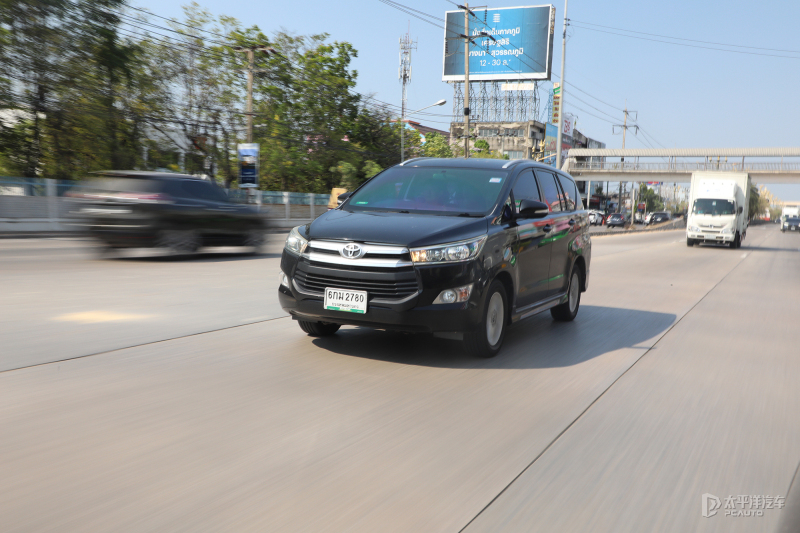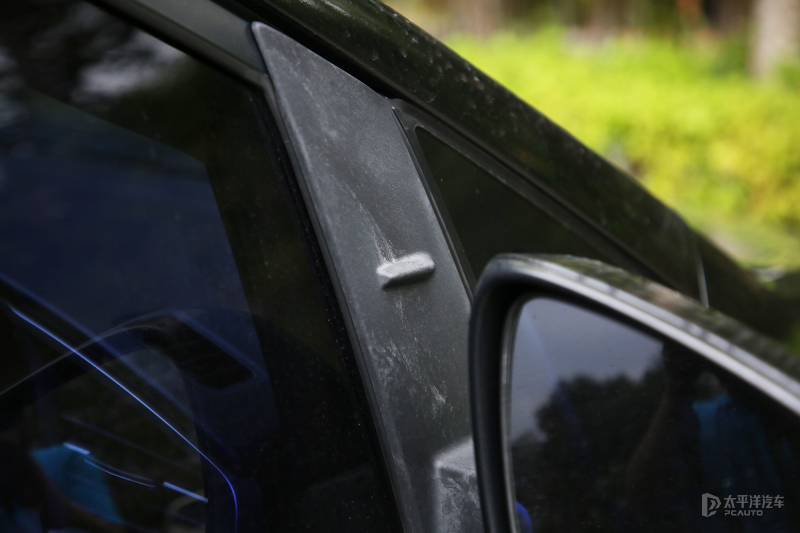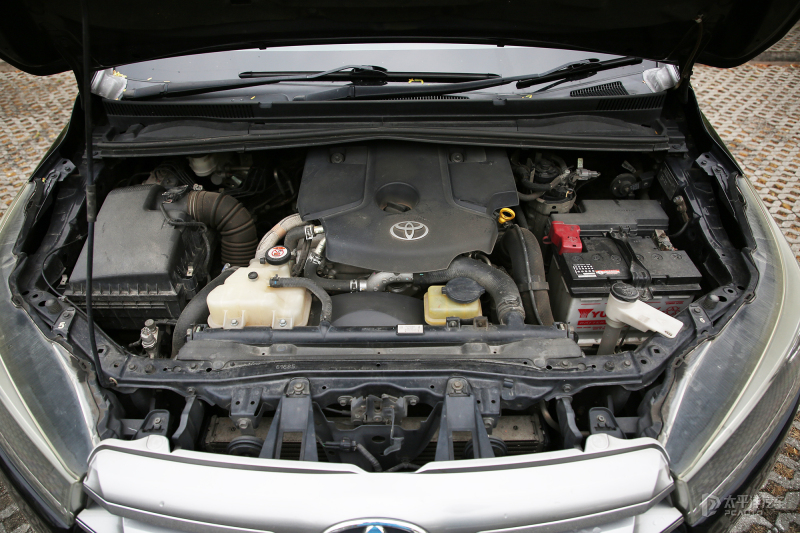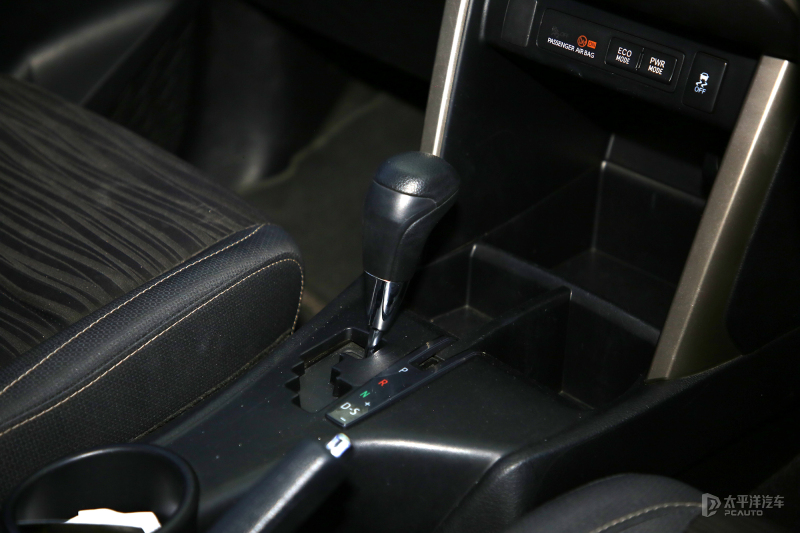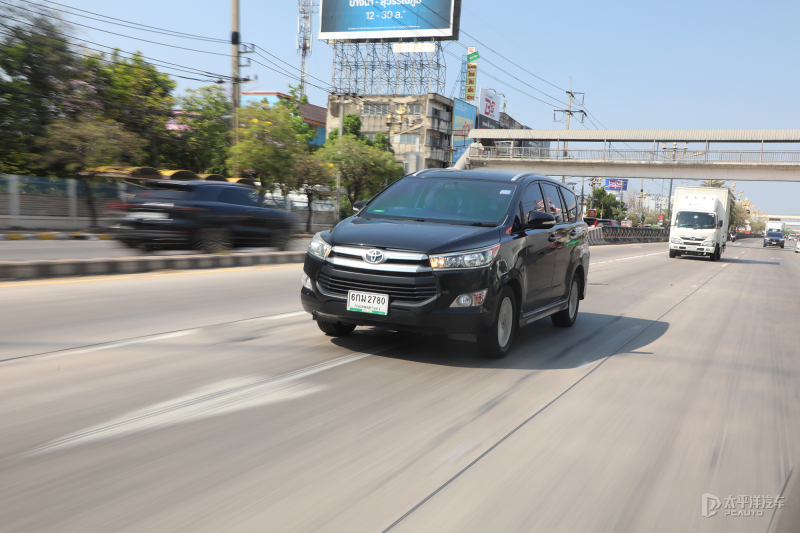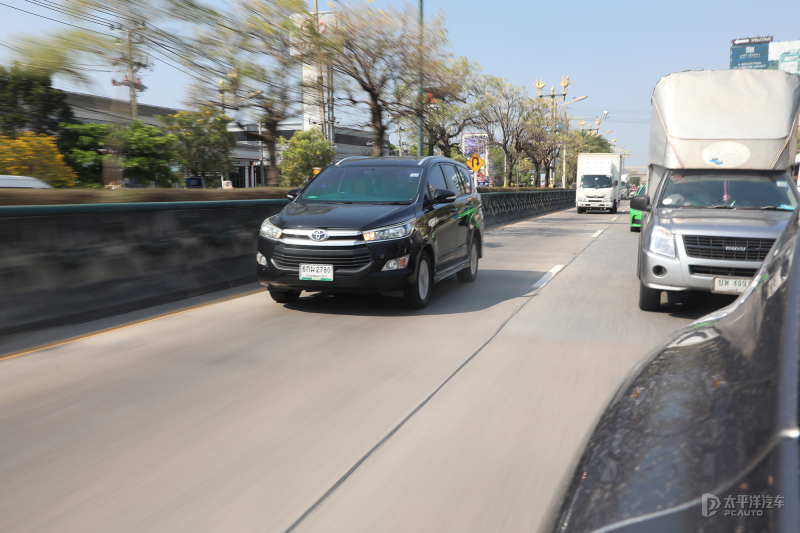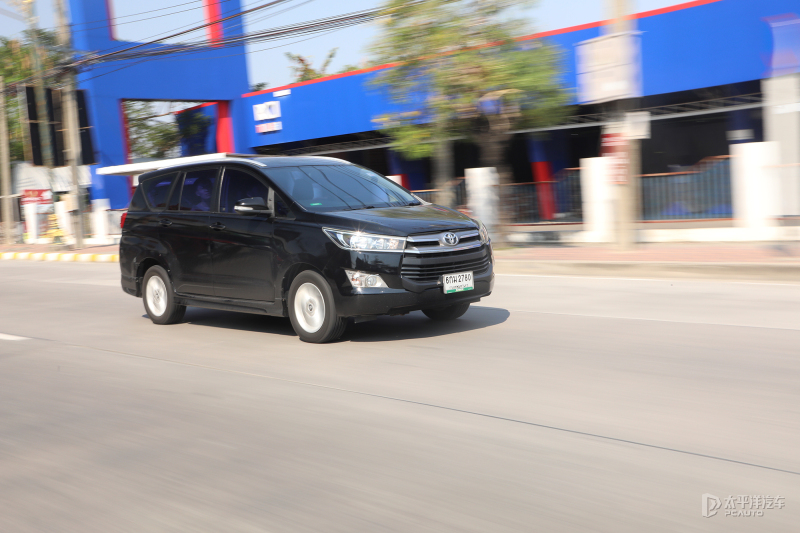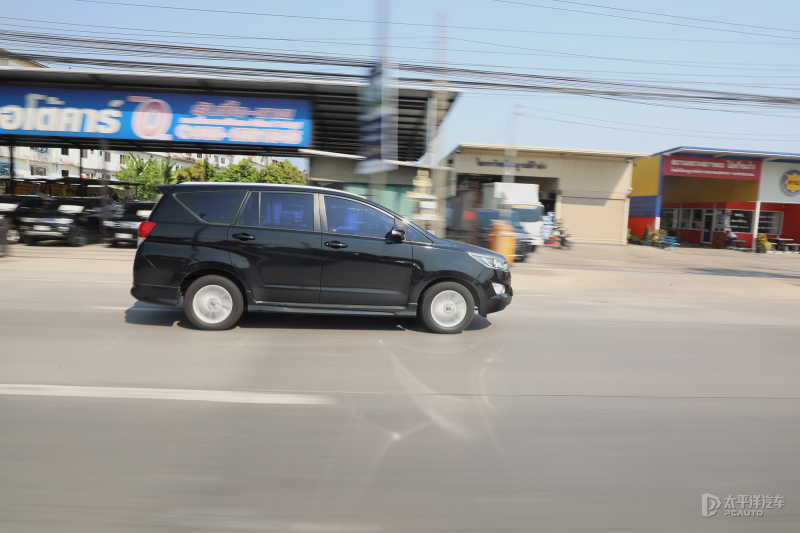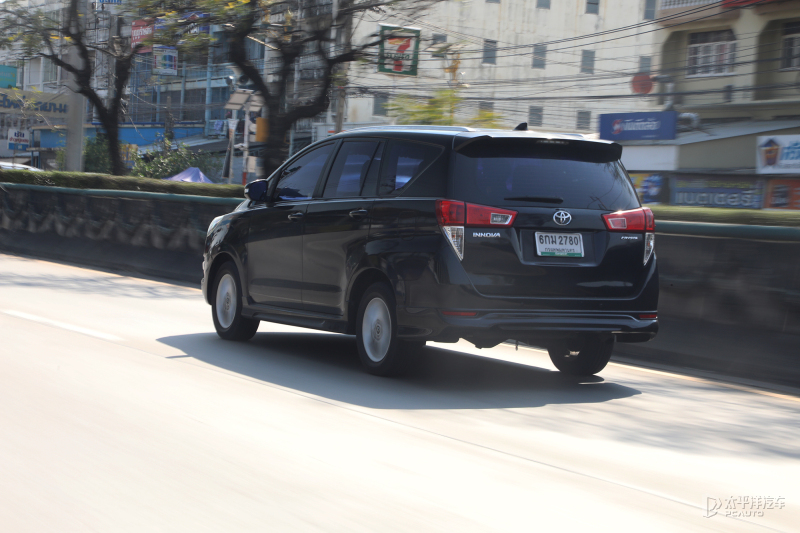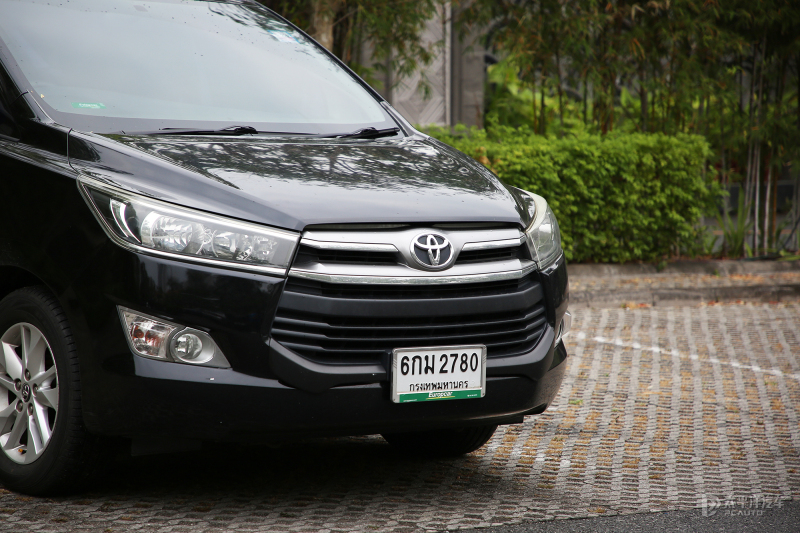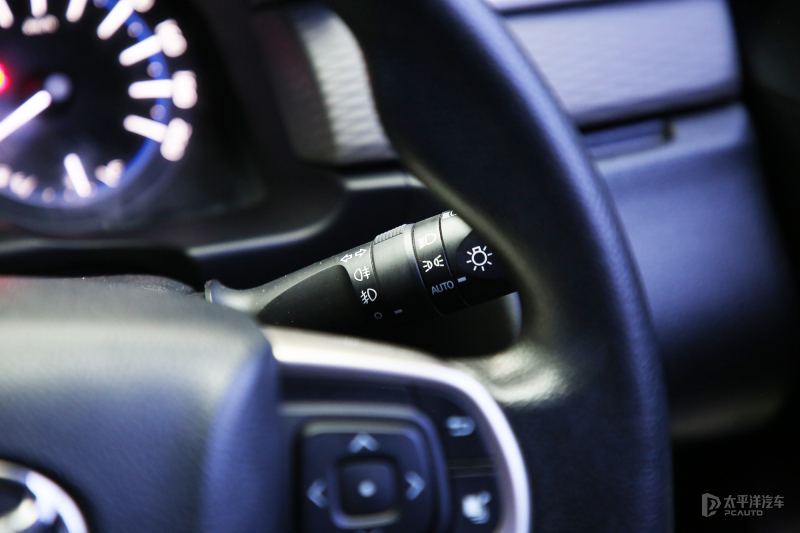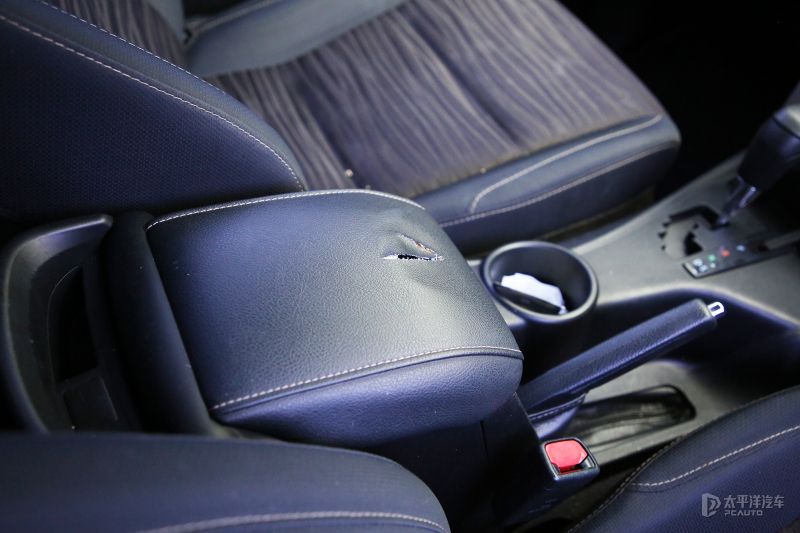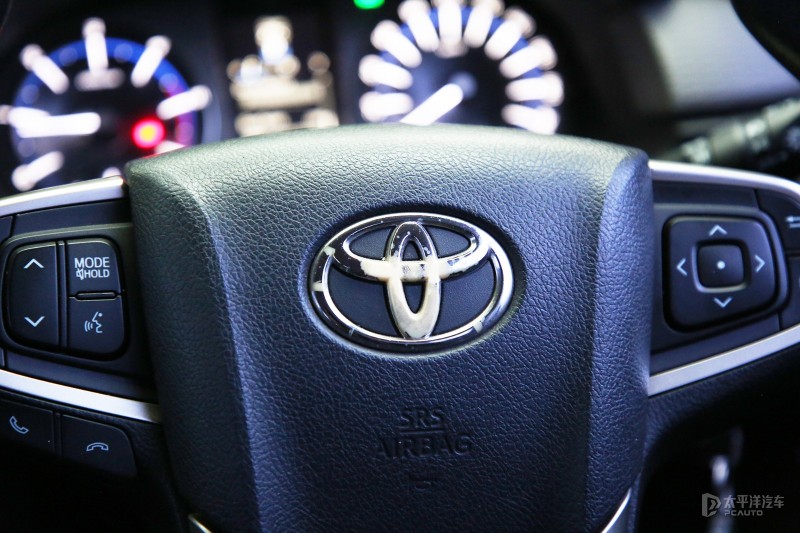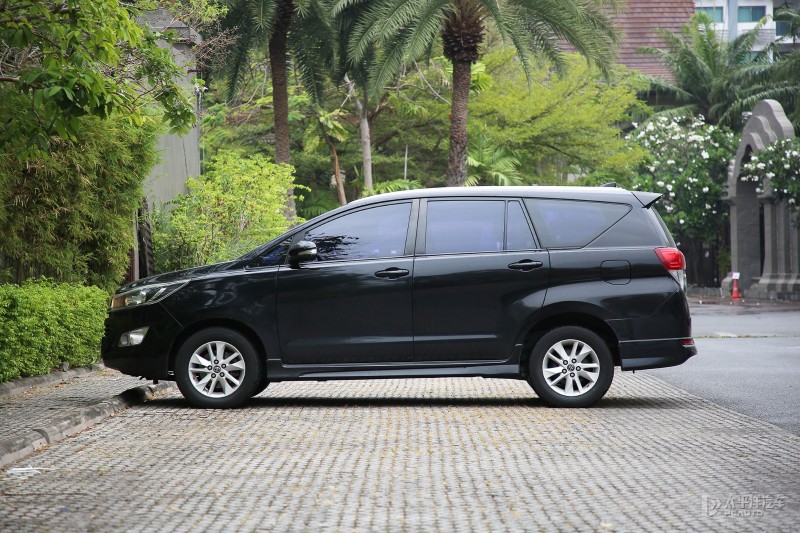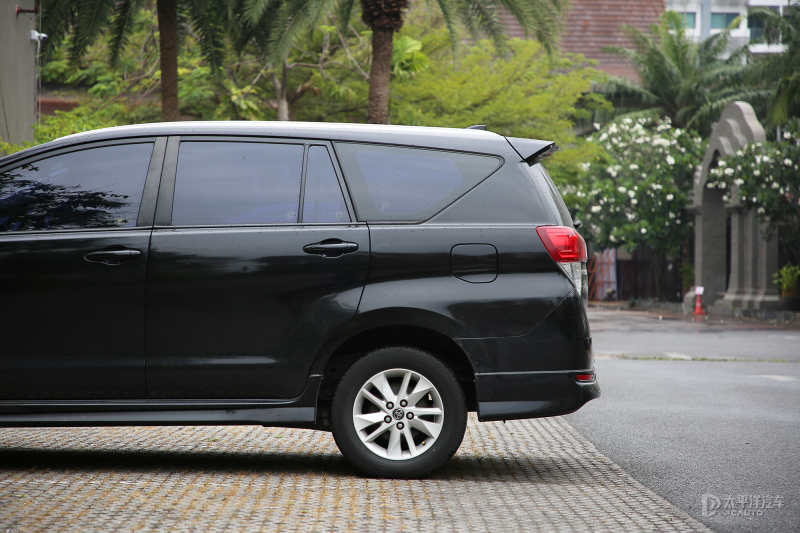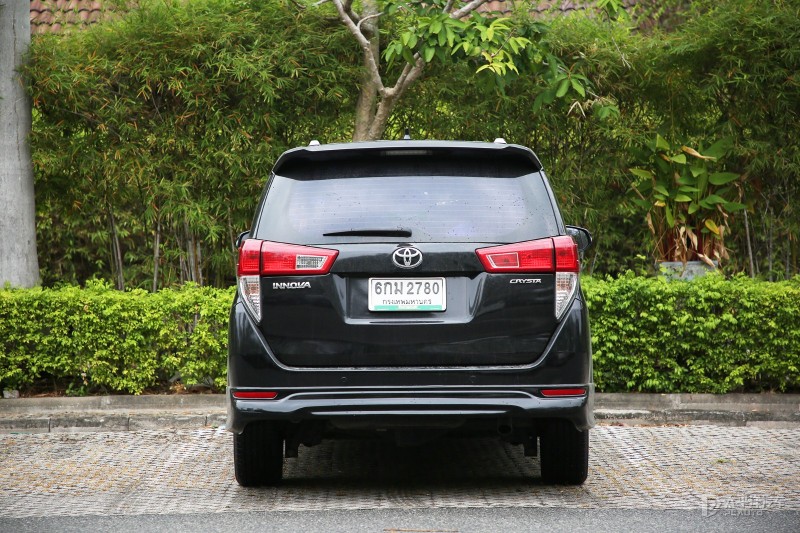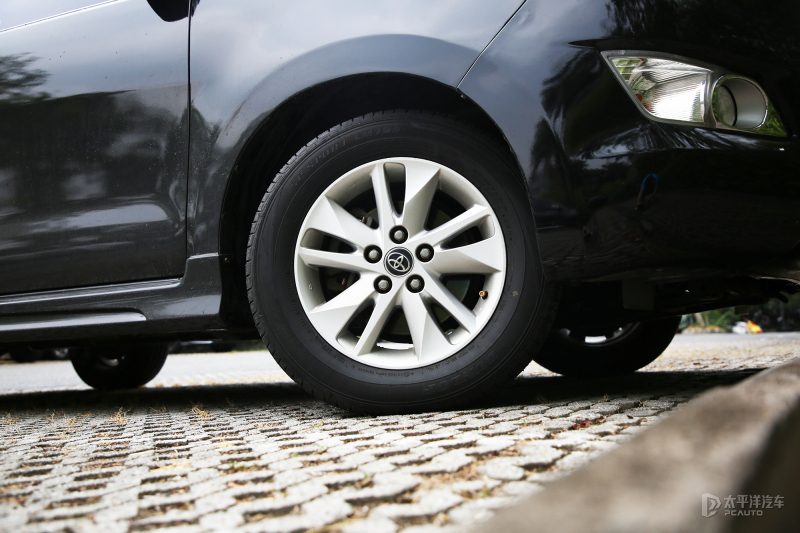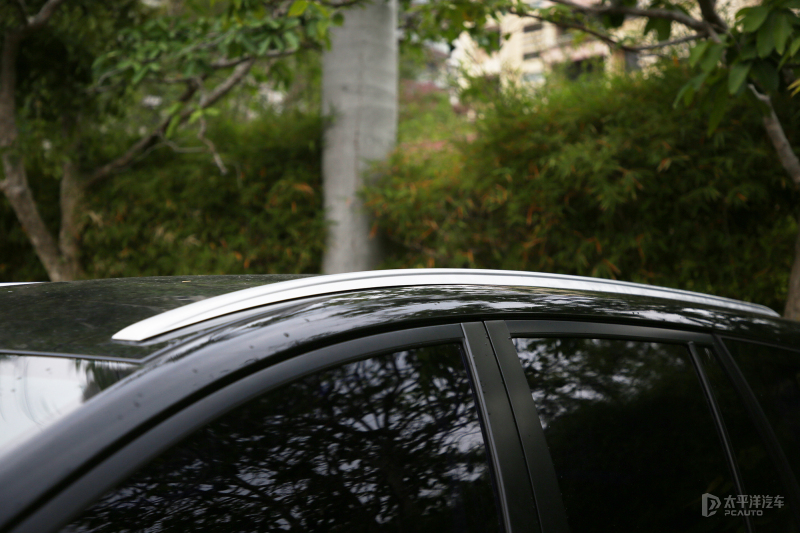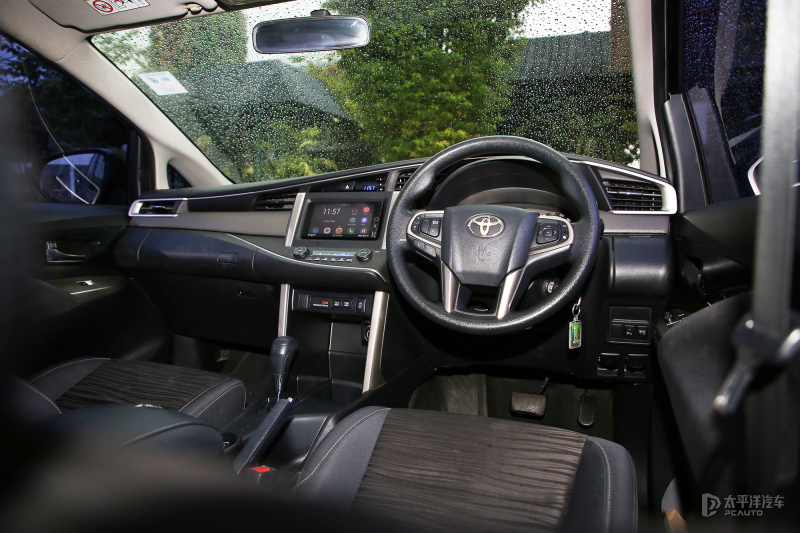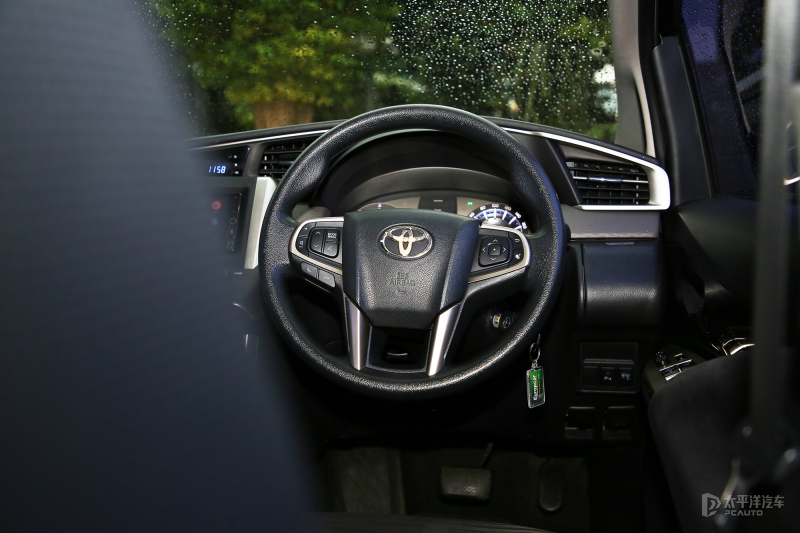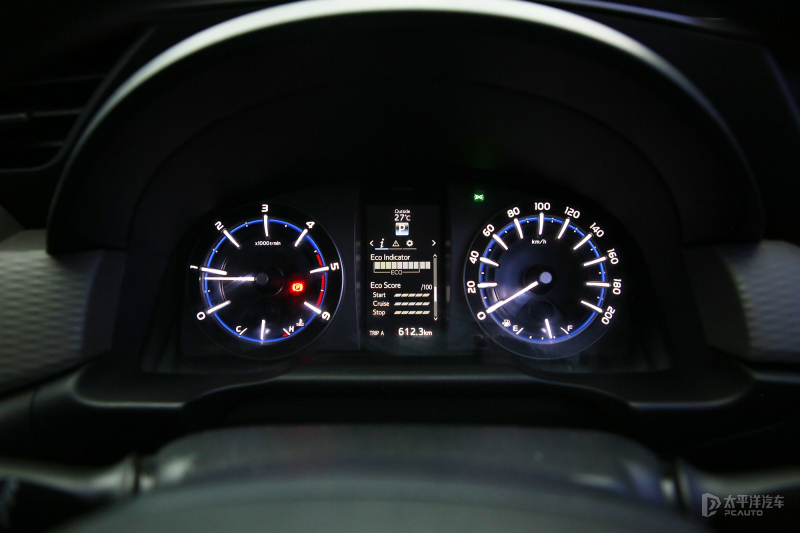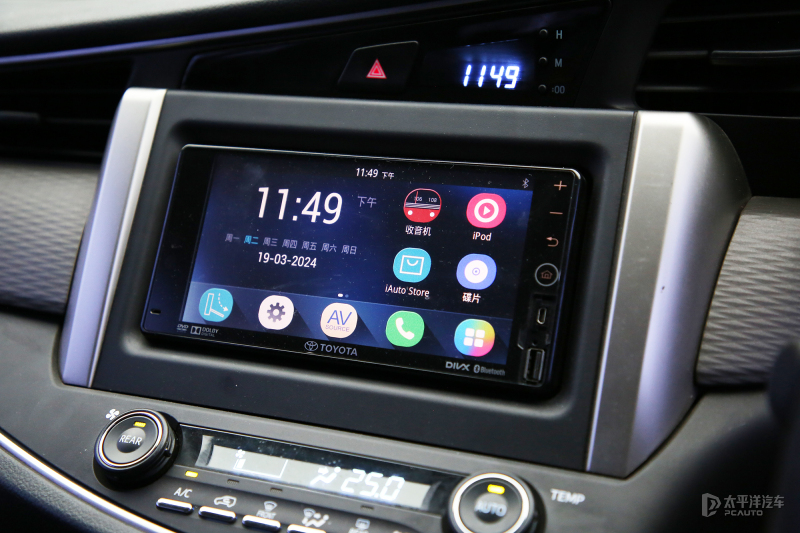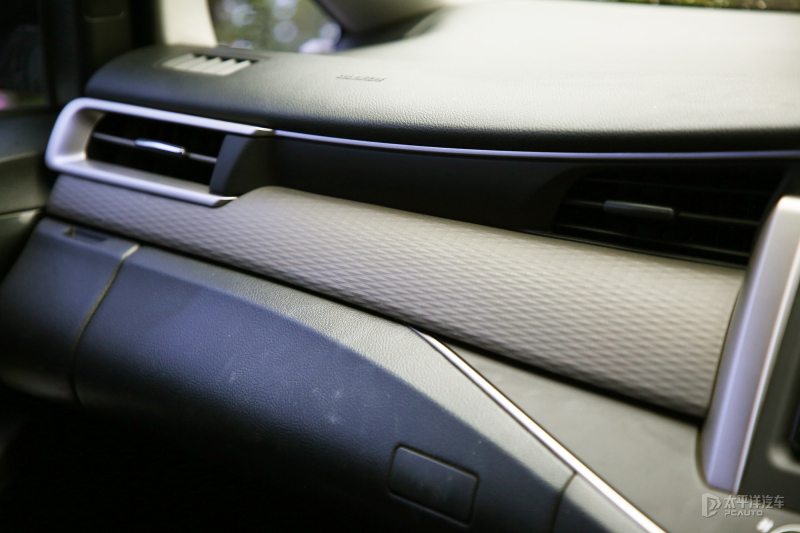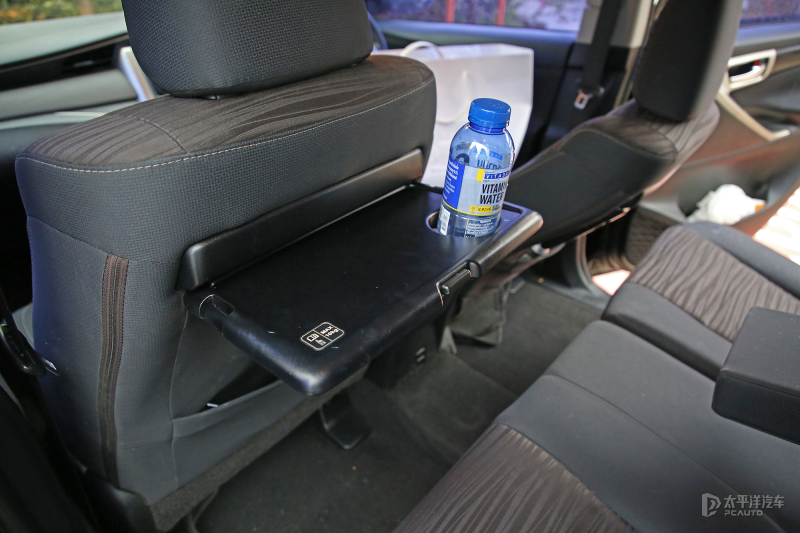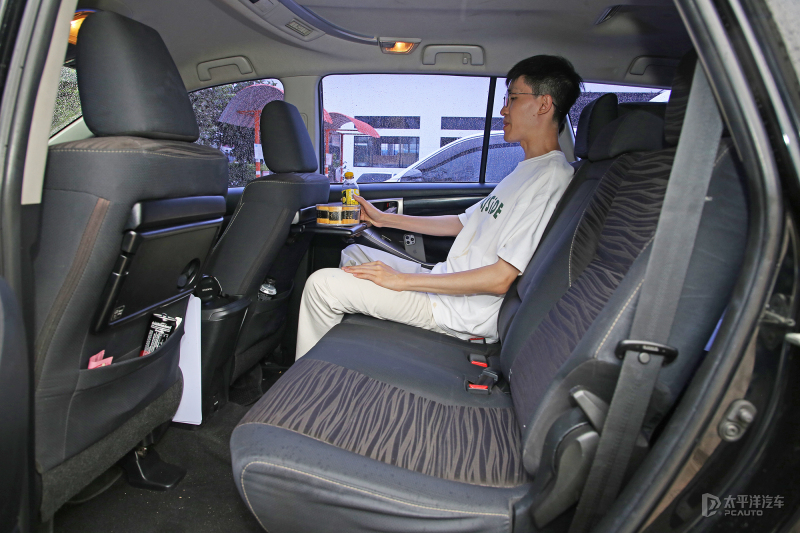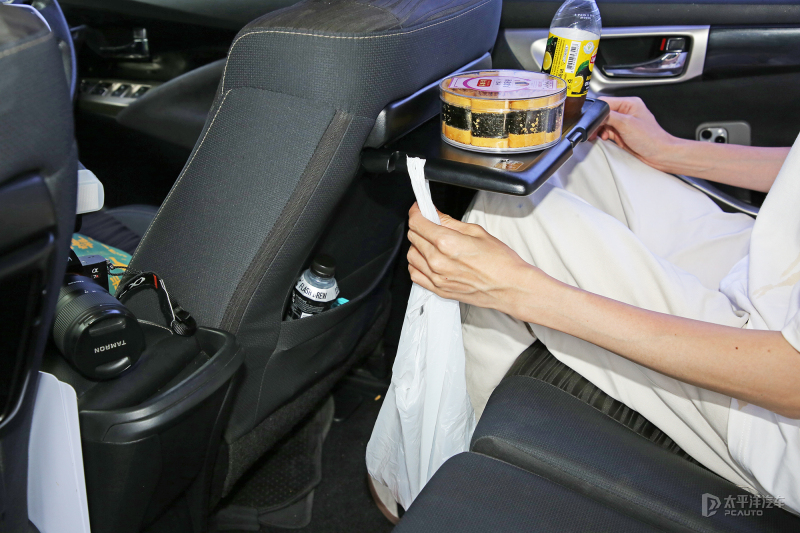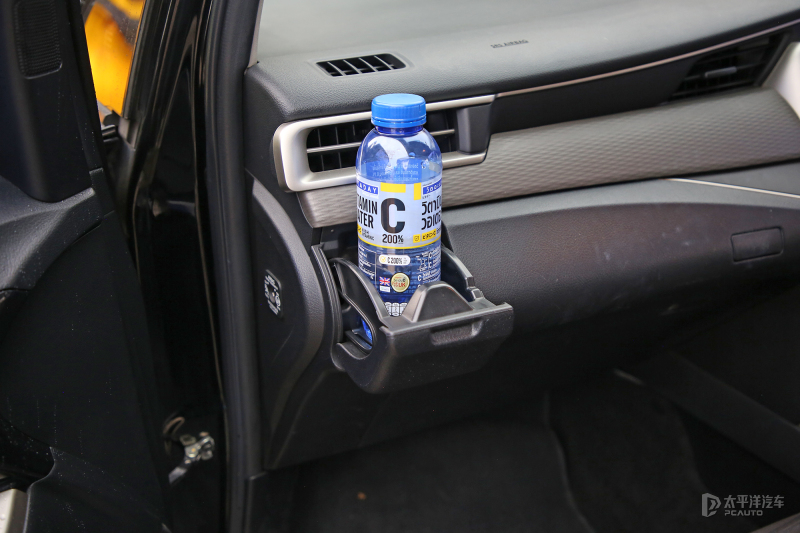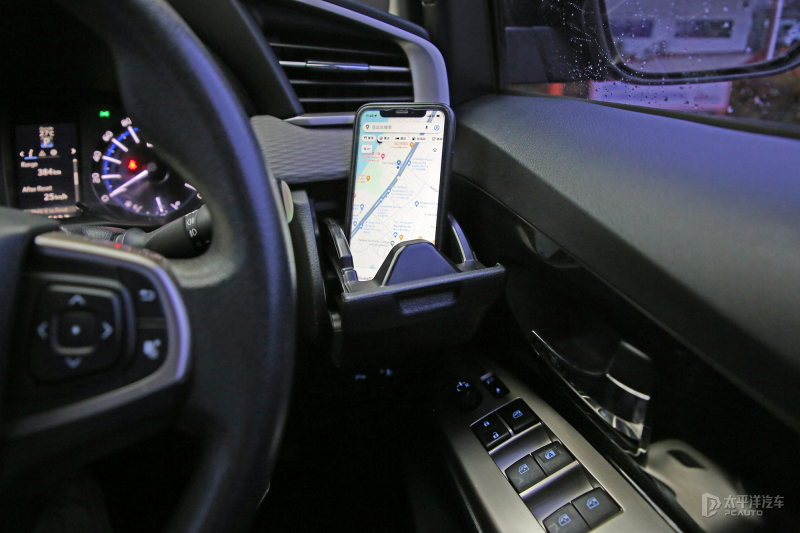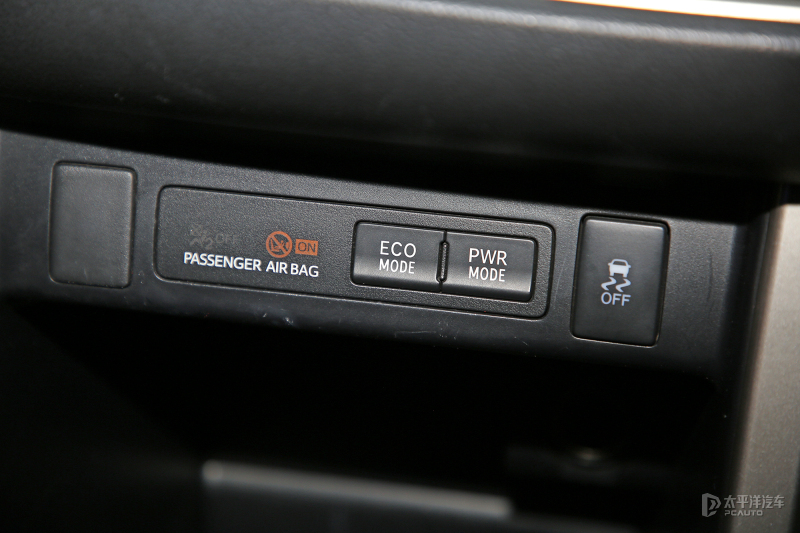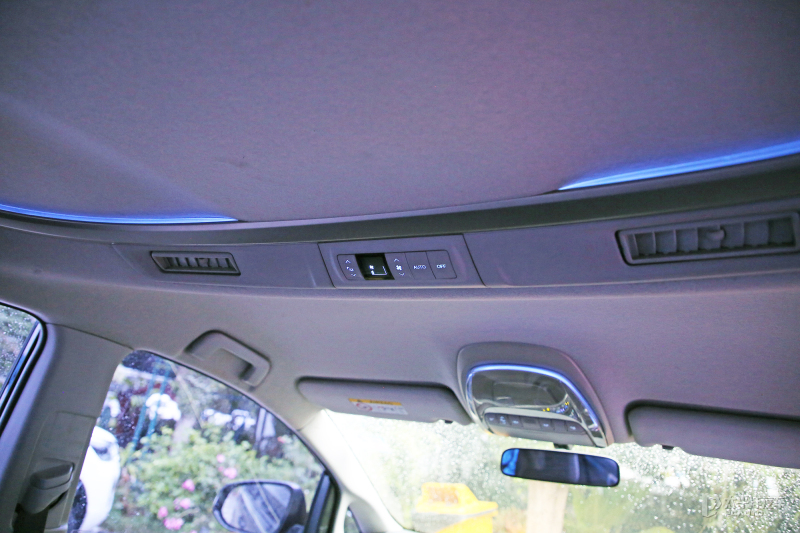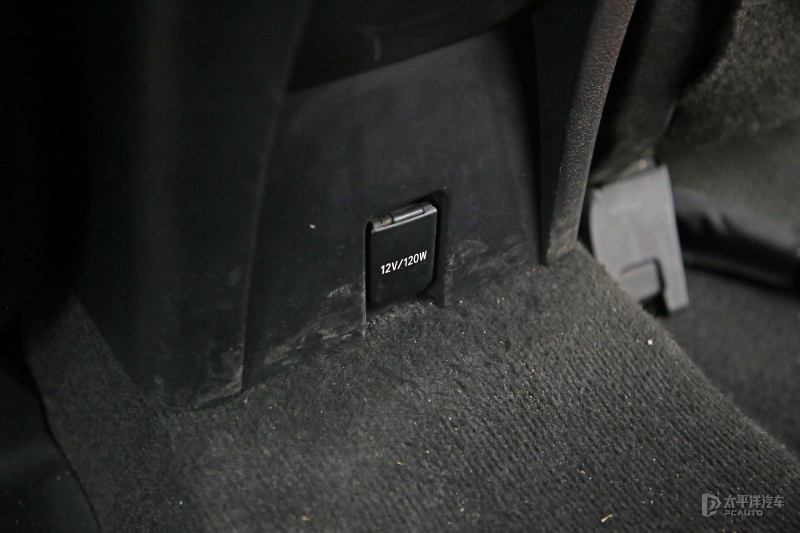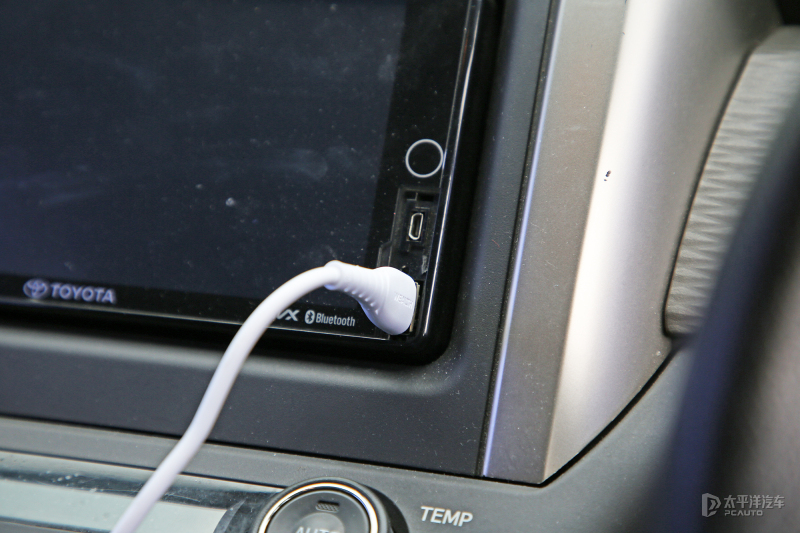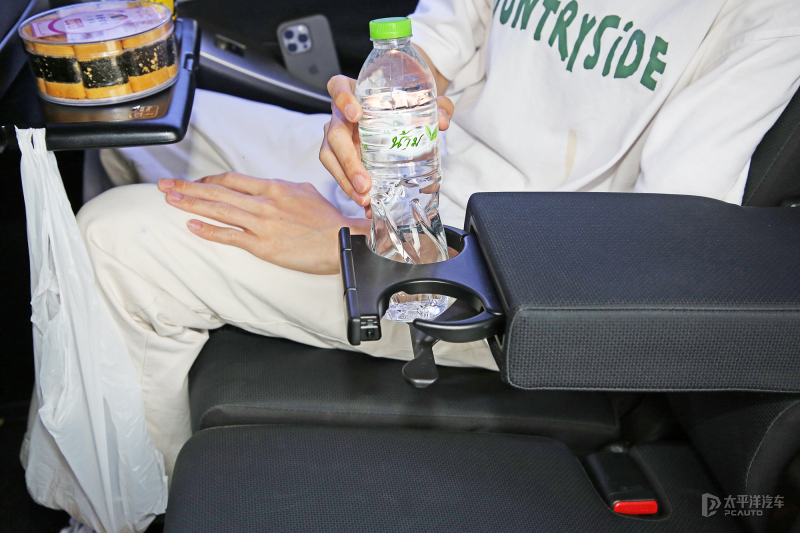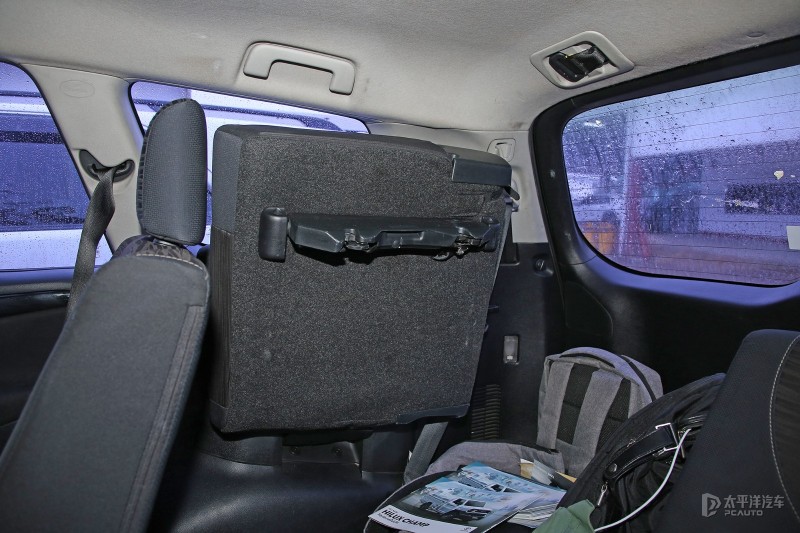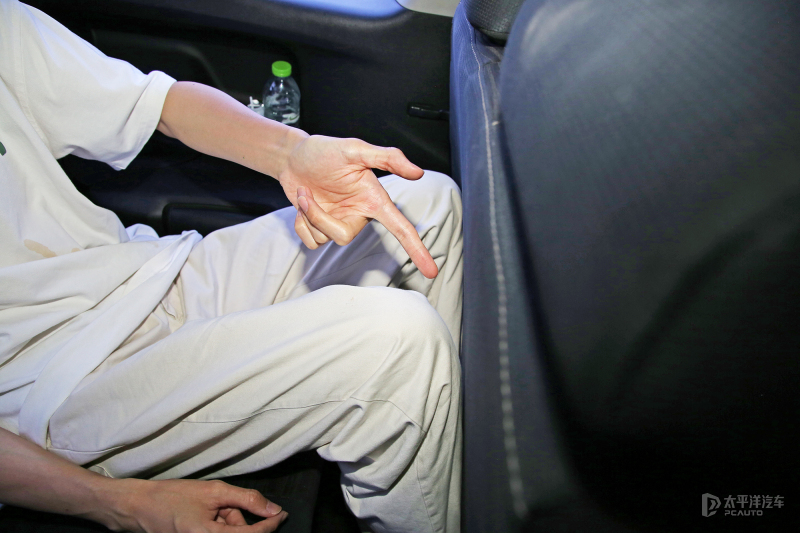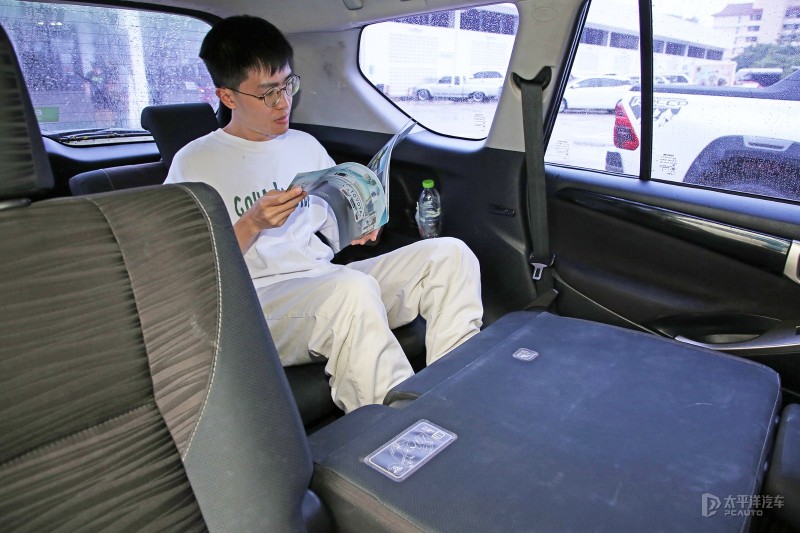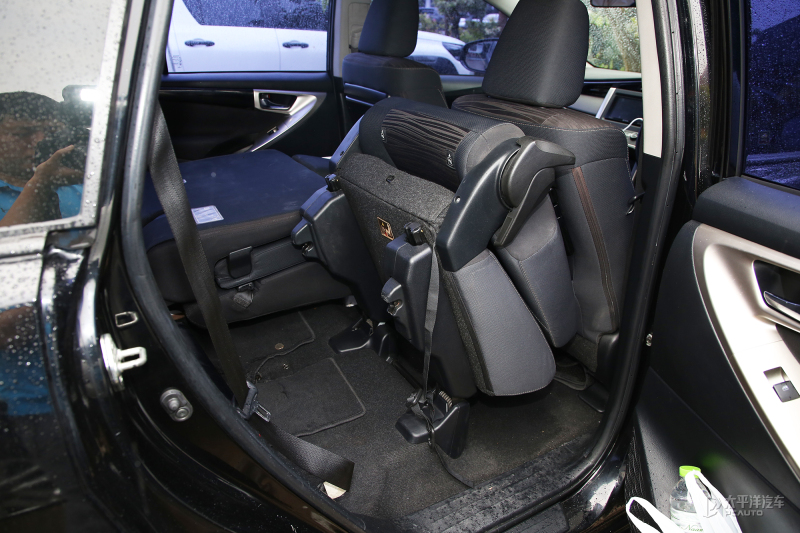To experience the durability of Toyota, we rented an INNOVA with 133,000 kilometers for testing
 Kevin WongMay 02, 2024, 10:00 AM
Kevin WongMay 02, 2024, 10:00 AM
The test originated from an interesting proposal.
The situation was that our team of six was planning to carry out a series of shooting sessions in Bangkok and Pattaya over a week, so we needed to rent a work car to meet our daily travel needs and carry a lot of luggage and shooting equipment.
"Why not rent a high-mileage Toyota? We could see for ourselves just how good and reliable a Toyota is, and at the same time test its fuel efficiency," one of our team members suggested. I have to admit I was pretty intrigued by the idea when I first heard it.
In the Thai market and indeed the entire Southeast Asian market, there's no doubt that Toyota is the best-selling car brand. It boasts many well-known old car modelsand the cars always very active in the second-hand market. We chose to rent an older model of INNOVA CRYSTA, which had driven 133,000 kilometers. This mileage would still be considered "youthful" for a car, but once a car hits over 100,000 kilometers, many start to reveal some reliability issues. Furthermore, compared to privately owned vehicles, its condition is likely far worse since this car has always been rented out.
So how does this INNOVA, which has tirelessly covered 133,000 kilometers, perform nowadays? Is it still that reliable, fuel-efficient, and practical Toyota?
I. About INNOVA's fuel consumption and noise test results
First, let's look at the results of our fuel consumption and noise tests for the INNOVA. We had originally planned to professionally test the vehicle's acceleration and braking performance, but due to rain and the fact that we were renting the vehicle, we decided to scrap those tests which could potentially harm the vehicle and pose risks. Previous reports suggest that this model takes about 11.4 seconds to accelerate from 0 to 100 km/h.
The test of fuel consumption is perhaps what everyone is most curious about. The basic procedure is to fill up the vehicle's tank until the nozzle automatically stops, and then reset the trip distance and average speed data. The vehicle is then driven over 100km (in fact, we drove 416.2km in nearly a week), after which the tank is filled up again until the nozzle automatically stops. The amount of fuel added is recorded, and this is used to calculate the actual fuel consumption per hundred kilometers.
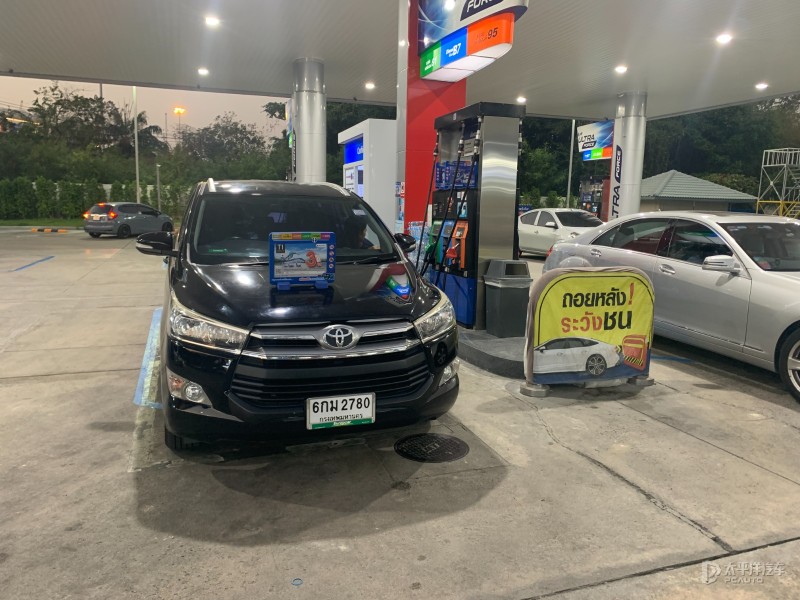
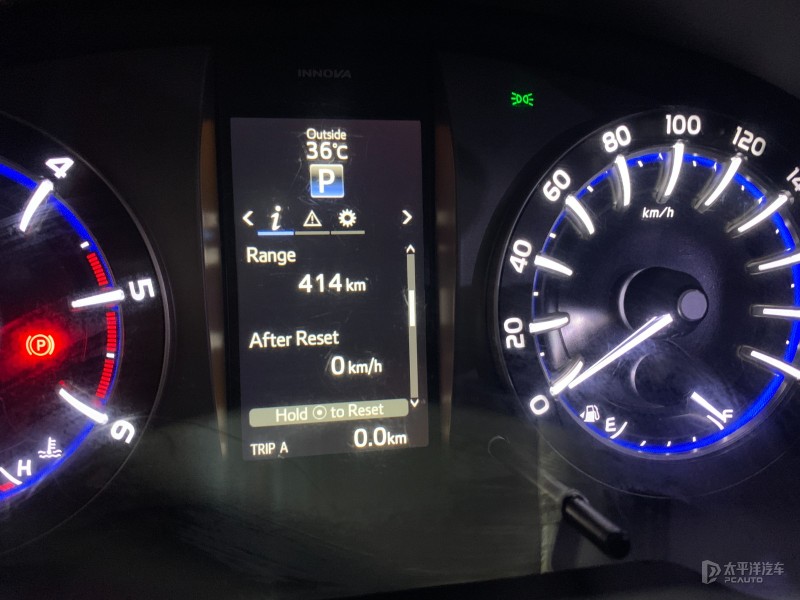
【Reset the trip odometer and average speed after filling up with petrol】
Let's start with the results. Our total testing distance was 416.2km and the amount of petrol added was 34.885L. The calculated fuel consumption was 8.38L/100km.
The entire test environment included congested urban roads and smooth highways. The overall road conditions were very comprehensive, with an average speed of 26km/h (normally, an average speed of 30km/h would be more reasonable; an average speed of 26km/h means we encountered too much traffic). Each trip was taken with 6 passengers and a fully packed trunk, with normal use of the air conditioning. Under these conditions, a fuel consumption of 8.38L per 100km is quite low, which is very important for a practical MPV.
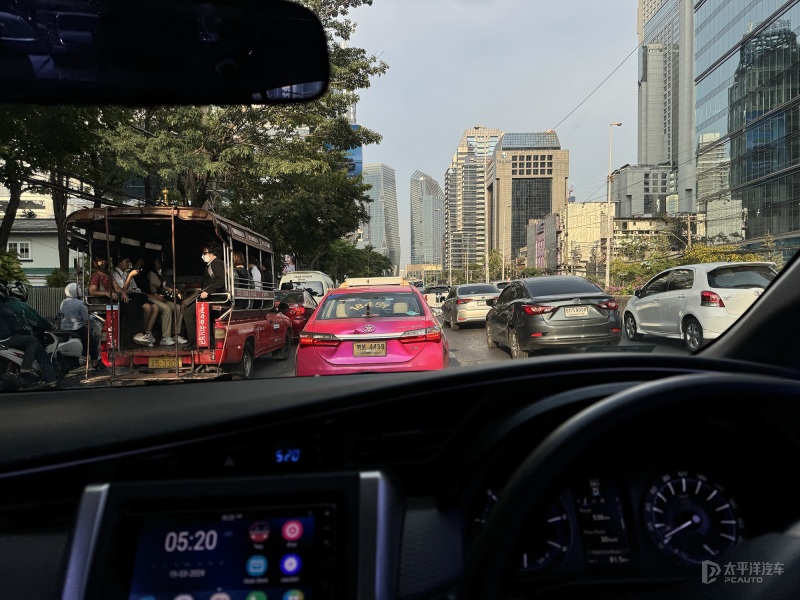
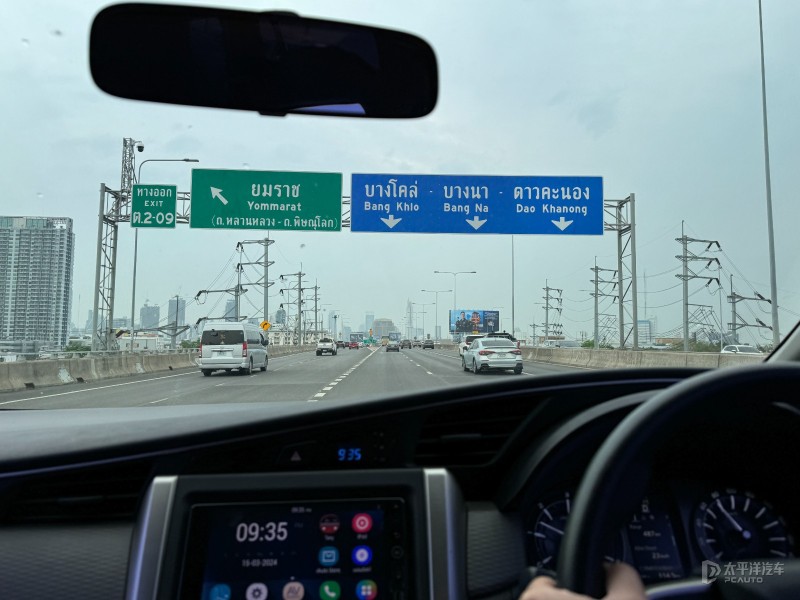
【The road conditions included urban roads and relatively smooth highways】
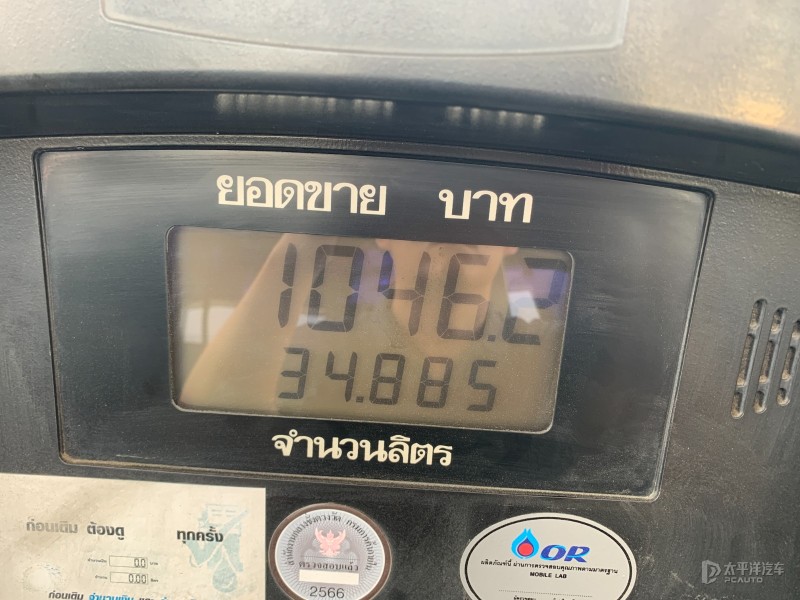
【Final fuel volume is 34.885L】
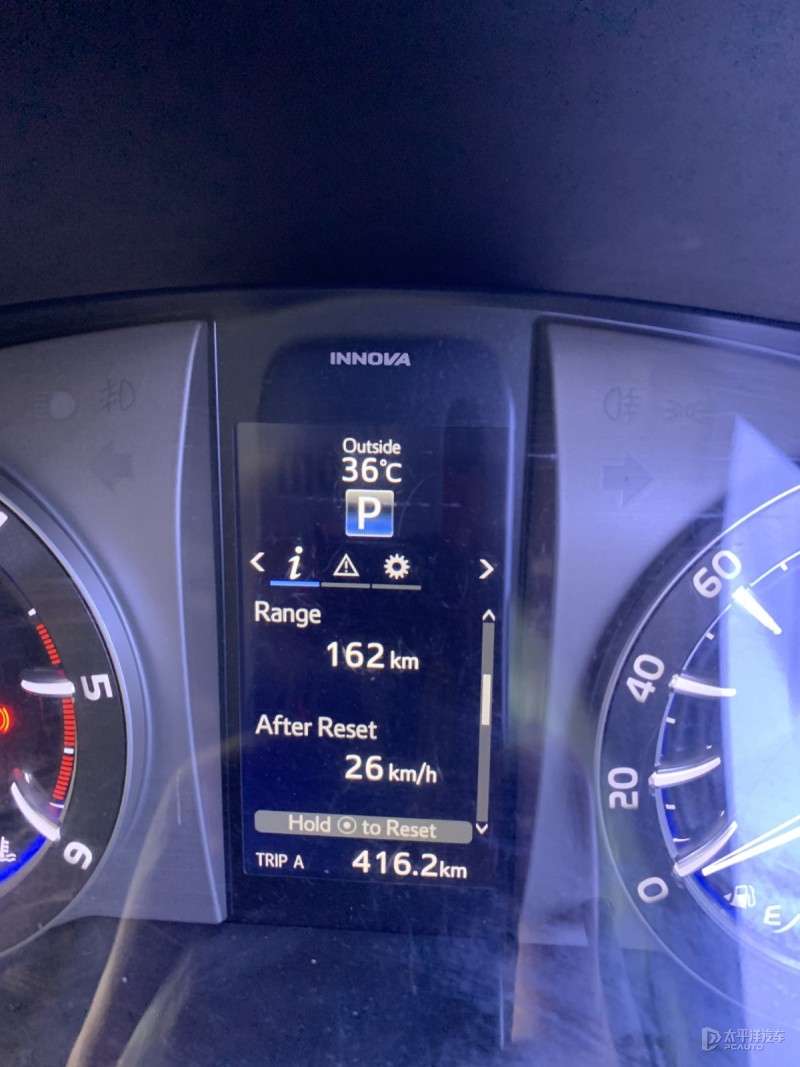
【The whole test covered 416.2km, with an average speed of 26km/h】
We also conducted a noise test, which was divided into four scenarios: idle, 60km/h, 80km/h, and 120km/h. The noise and vibration of a diesel engine at idle speed are higher than those of a petrol engine, so you can see that the idle noise of INNOVA is relatively high. As the speed increases, the noise noticeably rises at 60km/h, but as the speed continues to increase, the noise increase starts to slow down. At a speed of 120km/h, the main source of noise is the wind.
【INNOVA has made some designs for wind noise, such as the small backflow design next to the rearview mirror can reduce wind resistance】
The actual noise data of INNOVA under various scenes are as follows:
-Idle state: 52.1 decibels
-60km/h: 58.6 decibels
-80km/h: 59.9 decibels
-120km/h: 62.8 decibels

【Noise value inside the vehicle at idle】
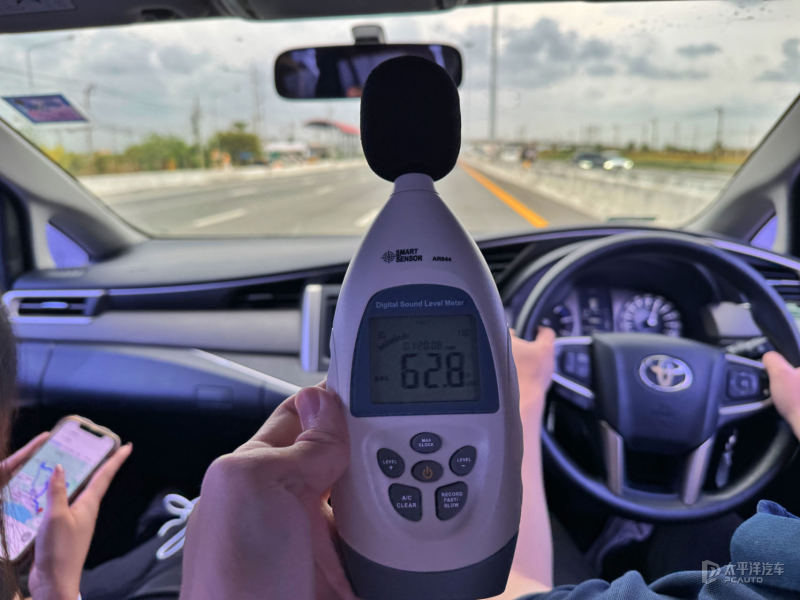
【The noise value inside the vehicle at 120km/h】
II. The process of driving is still satisfying
The 133,000 kilometers have not done fundamental damage to this INNOVA. If I were to rate its driving quality, my answer would be satisfied. Of course, this satisfaction does not mean it is perfect, it just means that compared to our expectations, its overall condition and driving quality are a bit better.
The car we use is equipped with a 2.4T turbocharged diesel engine, with a maximum power of 110kW and a peak torque of 360N·m, matched with a 6AT transmission. The INNOVA's automatic transmission model's engine torque is tuned a bit higher, if it's a manual transmission, the peak torque would be 343N·m. INNOVA also offered a 2.8T diesel engine model before but finally canceled this power system, and the 2.4T engine has already equal performance with that 2.8T engine.
Actually, not only in the Thai market but also in the entire Southeast Asian market, many MPV models are equipped with diesel engines. However, in the Chinese market, it is unlikely that an MPV would be equipped with a diesel engine. I have to admit, some features of the diesel engine are very suitable for MPVs. For example, it has a very powerful low torque range, and the engine can provide 360N·m torque when it is over a thousand revolutions, which means that 6 of us, plus fully loaded luggage, roaming in the city will not feel the car is underpowered. Every time you start and accelerate, this INNOVA can provide enough power, it doesn't feel too heavy when fully loaded. Of course, this 6AT gearbox is like an experienced boatman, smoothly and gently controlling this engine amid the ebb and flow of power. If I had to say what made the deepest impression on me about this INNOVA, it would probably be this gearbox, which remains very smooth after years of use, and shifts quickly and logically. I believe the rental company does a good job of daily vehicle maintenance.
At the same time, diesel engines also have aspects that are not suitable for MPVs. Its noise is very loud, and it comes with noticeable vibrations. For MPVs that emphasize comfort, these characteristics are not good. Of course, INNOVA seems to emphasize utility more than comfort. But unavoidably, while enjoying brisk acceleration, all of us in the car have to put up with the engine's "complaints".
This INNOVA's engine quality is very good, I believe that it hasn't been ruined by long-term use, and it is reliable. The lack of power manifests in inadequate power reserves when driving at medium and high speeds, slow acceleration, and difficulty overtaking at high speeds, especially with full load, the acceleration of this car seems to lack power.
INNOVA uses a non-monocoque body and also provides a four-wheel drive system. Using such a chassis structure based on hardcore off-road vehicles on this MPV sacrifices a lot of comfort, but it cannot be denied that on one hand it increases the chassis height of INNOVA and gives it higher ground clearance, while on the other hand, its chassis is more solid and durable. The design of this chassis structure is very targeted for the complex weather conditions and rough roads in Southeast Asia.
Having said that, if we're only driving on city roads, a non-load-bearing body is not friendly to us. Normally, the entire vehicle will show a noticeable lateral sway when passing through potholes and obstacles, and passengers in the back seat are particularly sensitive to this. The firm texture of the INNOVA's body and its high seating position gives everyone in the car a good view. I'm doubtful whether it's worth sacrificing the main comfort of an MPV for the durability of the vehicle. This has led us to a common conclusion: the practicality of INNOVA is more important than comfort. As we see, a mileage of 133,000 kilometers didn't affect it at all.
However, the suspension is different, long-term use has left a distinct mark on the feel of the suspension. There's not much to say about the shock absorbers of this INNOVA in terms of comfort, and the vibration of the road is transmitted directly to the passengers, with the shock absorbers not effectively dealing with it. I suspect the suspension of this car might not have been good when it was new, but it's undeniable that a stiff body and loose suspension make it uncomfortable for rear passengers.
So, is the driver comfortable? Not really. The steering feel of the INNOVA is a classic Toyota feel, heavy with a larger steering ratio. Its steering mechanism reveals a full mechanical texture, and some swings on the wheels are occasionally slightly transmitted to the steering wheel during driving, making me feel that the handling of this car is not that stable. In addition, the high center of gravity of the body and the non-load-bearing structure make this INNOVA not so robust at high speed.And in curves and regular lane-changing processes, you can feel the response of the body is somewhat clumsy and slow.
So, this INNOVA has left us with an impression of practicality and reliability. We have almost reached a consensus: the use of 133,000 kilometers has not caused obvious damage to the driving quality of this INNOVA because its driving quality is relatively rough. Or we can say, it is because INNOVA emphasizes reliability and practicality, so we can drive it around confidently today without worrying about unexpected problems.
This reliability eliminates the traces of time, but because of its simplicity and roughness, this INNOVA lacks a lot of comfort. But then again, is comfort really important for this INNOVA? At least we chose to rent it not for sitting in the back row drinking coffee, but to solve our daily commuting needs, it is the reliable tool car we want.
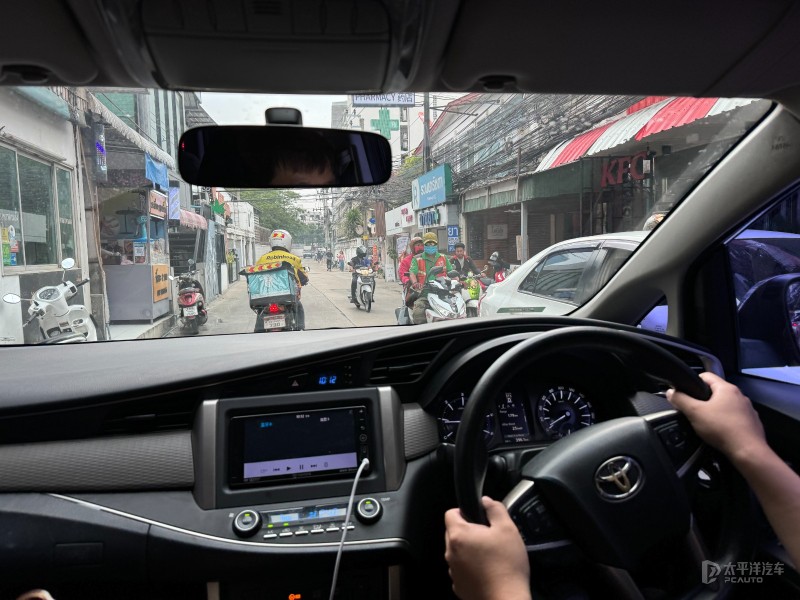
III. Some practical usage experiences
Let's take stock of what this INNOVA has damaged after using 133,000 kilometers. Firstly, most of the chrome on the Toyota logo on the steering wheel has worn off, revealing the old yellow inside, and the leather surface of the central armrest box is decayed. In addition, the automatic headlight is broken, and it cannot be turned off during daytime driving and can only be turned off after parking and power off. (I wonder why Toyota's automatic headlights don't have an OFF feature, so you can't manually turn off the headlights.) Besides, this car doesn't have any obvious damage.
【The automatic headlights cannot turn off by themselves during daytime driving, there is no OFF button for the automatic headlights of Toyota】
【This INNOVA does not have much damage, it does not look like a car that has been driven for 130,000 kilometers】
This may be thanks to the enameled steering wheel and fabric seats. If these were made of leather, they would inevitably be damaged by now, just like the central armrest. But plastic and fabric materials are more durable. However, the downside is that it makes the interior look cheaper.
The small designs of this INNOVA are very convenient to use, such as the small table on its second row of seats. The design of these two tables is for practical use, not for upgrading. The black plastic table does not look good, but it has a large enough area to put our lunch, and there is a special cup holder, even the side has a plastic bag hook. Many of our lunches are resolved in 7-11, and the small table in the rear row has become our daily dining table.
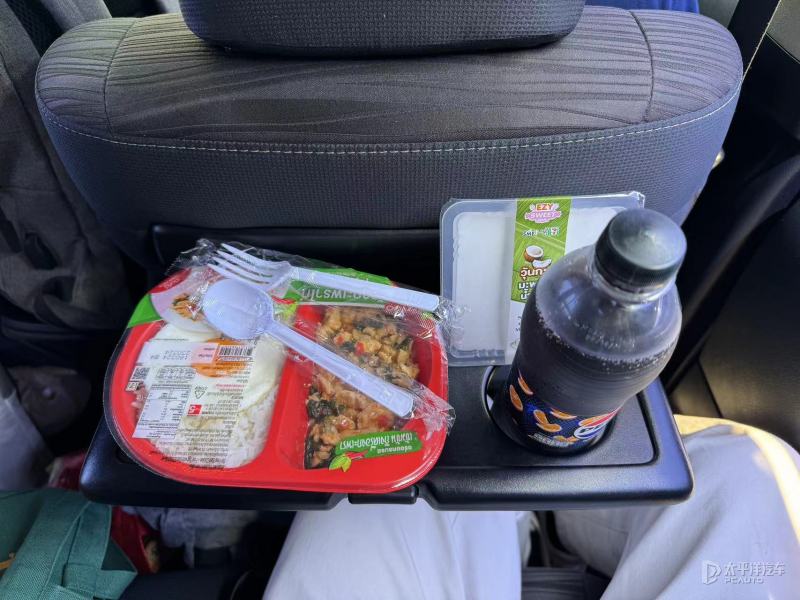
The hidden cup holders on both sides of the front row are also a very convenient design. In addition to placing water cups, I also use it to place my phone so I can check my phone's navigation information at any time. If you look at the interior design of the current electric car, the center console of this INNOVA can be said to have no practicality at all. Only a middle cup holder, the small storage bin in front is also inconvenient to hold the phone, and the space of the central armrest box is small. In comparison, the traditional styling and un-technological interior design make it easier for me to accept.
INNOVA did not consider the convenience of charging, with only one USB port across the entire car. There is one 12V power outlet for both the front and rear rows, but you will need to prepare a USB port converter yourself. However, INNOVA does consider the rear passengers, not only providing independent control of automatic air conditioning but also a blue ambient light strip. While the overall configuration of the vehicle is fundamental, the independent air conditioning in the rear row seems particularly advanced. In addition, the second row of seats also provides a small central armrest with two cup holders.
The 2+3+2 seat layout of the INNOVA emphasizes practicality. This type of arrangement sacrifices some of the middle passengers' comfort and is more commonly seen in SUVs, while some more comfortable MPVs choose a 2+2+3 seat layout. However, our experience is that if we use a 2+2+3 seat layout, we cannot fit our luggage. Thus the 2+3+2 seat layout is more practical.
Our approach is to fold up a seat on the third row to make more room for luggage. The upside of this INNOVA model is that the third row of seats can be independently folded, the downside is that they cannot be hidden beneath the platform, nor kept level with the trunk, but they must be upright on one side, thereby occupying some valuable storage space and makes it difficult to make full use of the available space. This method of folding seats is typically used in utility vehicles where practicality is emphasized, but actually, it is not very practical.
However, without a doubt, the loading capacity of INNOVA has surpassed our imagination. In the situation of full loading with 6 people, it accommodated 4 carry-on suitcases of 20 inches one 26-inch and one 28-inch suitcase, plus some luggage bags carrying equipment. We exploited the space to the maximum, which was rather uncomfortable for the passengers in the third row.
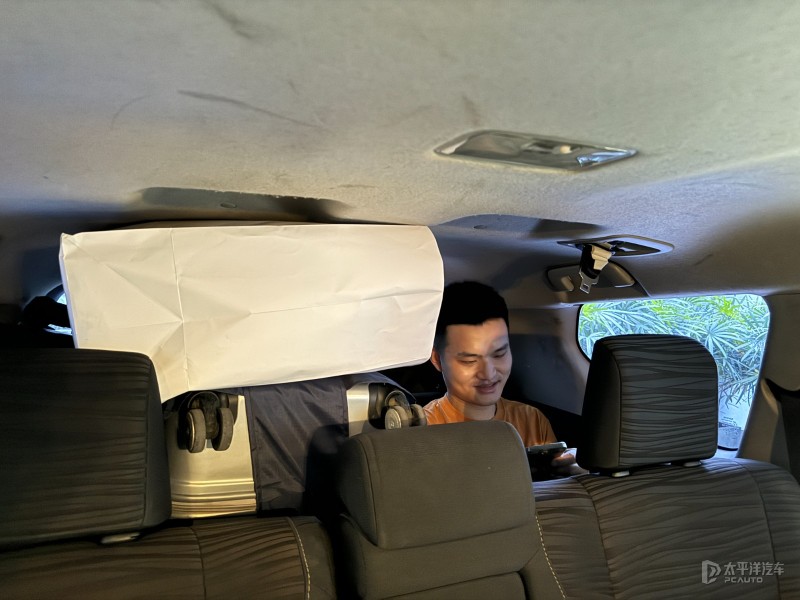
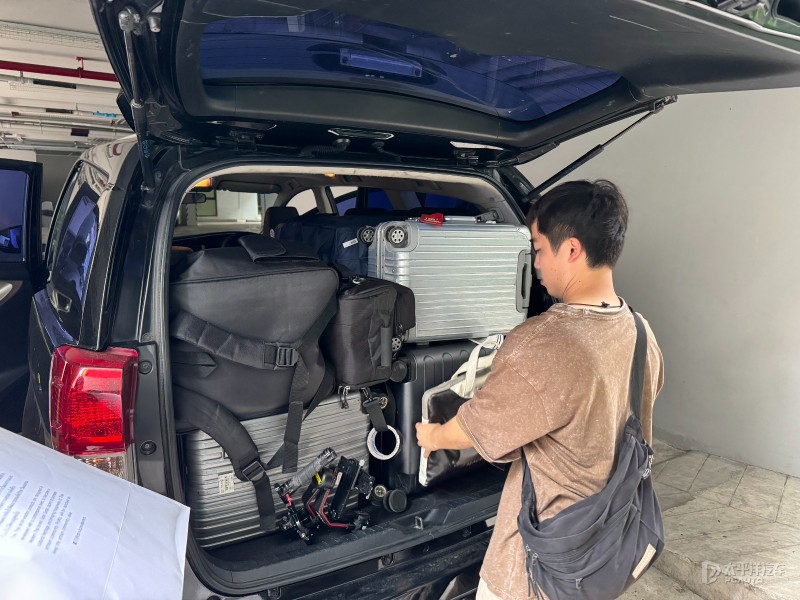
【The third-row space is very compact】
After a period of experience, we feel that the third row of this INNOVA is not suitable for older people in the family to ride. It does not have a second-row aisle, and when entering the third row, the second-row seats need to tilt forward, leaving a small space for getting on and off the car. Even young people can't get in and out easily. In addition, the high ground clearance of INNOVA is also different from many MPVs, and it is more difficult for the elderly with inconvenient legs and feet to get on and off the car.
Test Conclusion:
It is clear that INNOVA is not the kind of perfect MPV in our mind, but it is durable, reliable, and extremely fuel-efficient. These characteristics are deeply felt by us through a week of experience.
Reliable and fuel-efficient, I think these are the most basic qualities required by a highly practical multipurpose vehicle and the most attractive qualities. INNOVA does very well in these aspects. I believe this also makes the INNOVA popular in the used car market.
If any infringement occurs, please contact us for deletion

Toyota Tundra Owner Achieves the Second Million-Mile Milestone
[PCauto] The mileage often measures the quality and durability of a car, and Victor Sheppard and his two Toyota Tundra pickups have set a staggering record.With Victor Sheppard's dedication and careful maintenance of the Toyota Tundra, he successfully drove two different Tundra pickups over 1 million miles (approximately 1,609,340 kilometers).In 2007, Sheppard bought a brand new Toyota Tundra CrewMax. Over the next nine years, as a contractor, he worked across the United States, from Louisiana t

BYD Plans to Promote 1000V High Voltage Super Charging Stations and Its Models on a Large Scale
【PCauto】Recently, the news that BYD plans to massively implement a 1000V high-voltage supercharging platform has attracted widespread attention. It is reported that this platform will be launched in the middle of March this year and supports super-fast charging above 5C. After its release, it will quickly be popularized to its own models and large-scale construction of 1000V supercharging stations.This move will undoubtedly set off a wave in the new energy vehicle market. Let's delve into the te

XPENG G9 is about to be launched in China, bringing 66 upgrades in features
【PCauto】XPENG has recently announced that the 2025 XPENG G9 will soon be launched in China. Although the official did not announce the time and price, the success of XPENG G6 and X9 has rekindled expectations for the once-failed G9 by XPENG. In terms of appearance, the G9 continues the X-BOT FACE 3.0 design language, with a closed grill at the front paired with split-style headlights on both sides, new two-tone collision colors and all-black body styles, with a petal-style wheel hub. Combining

BYD YANGWANG U7 Launches with World's First Suspension Charging Tech
[PCauto] On March 27, BYD YANGWANG U7 was launched, with two power versions of pure electric and plug-in hybrid, a total of four models. YANGWANG U7 EV Five-seater Luxury Edition, priced at about 292.85 million baht/RM38.31 YANGWANG U7 EV Four-seater Flagship Edition, priced at about 330.04 million baht/RM43.19 YANGWANG U7 PHEV Five-seater Luxury Edition, priced at about 292.85 million baht/RM38.31 YANGWANG U7 PHEV Four-seater Flagship Edition, priced at about 330.04 million bah

What will the new Perodua Car look like in 2025? What kind of changes will they undergo?
【PCauto】In 2025, Perodua will introduce a series of anticipated new car dynamics, covering the launch of new models and remodeling of several existing models, whether in the bold step in the field of electrification or in the optimization of classical models.Perodua is to launch its first electric car in 2025Perodua's first pure electric car is expected to go on sale officially in the fourth quarter of 2025. To ensure the vehicle's performance and quality, Perodua may initiate testing work as ea
Popular Cars
Car Compare

